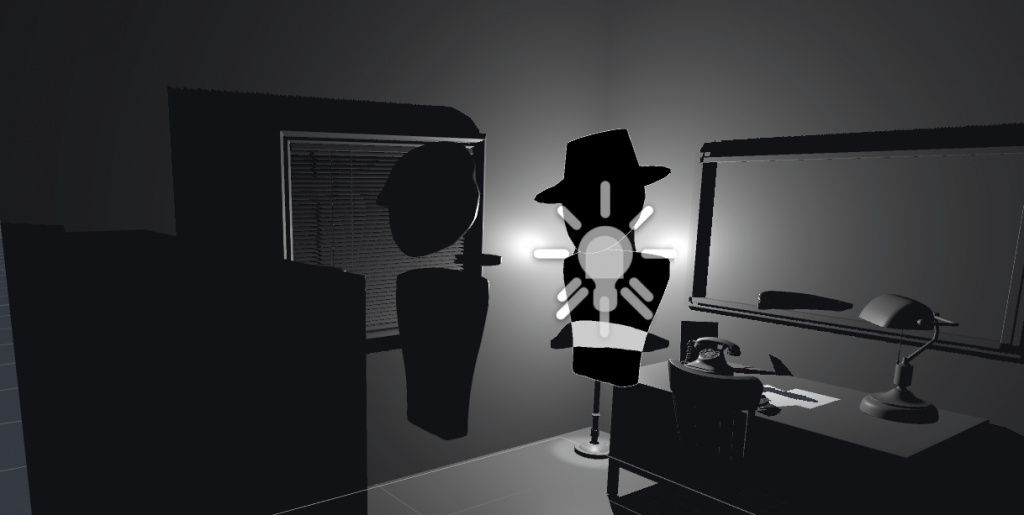When trying to take inspiration from existing narrative games, there is a natural inclination to want to create a photo-realistic scene. This, however, could not be achieved by our small development team. We therefore very quickly decided to create relatively anatomically correct, non-realistic characters in the forms of silhouettes. Shadows and contrast are an inherent part of the Film Noir aesthetic. So many noir stories are categorized by a silhouette standing in the fog. Silhouettes add to the suspense and intrigue of any particular scene, and we wanted to channel this in “One of the Family.”
When initially implementing these designs, we explored a few different ways of creating the silhouetted style. The first was to put a light-rejecting black on the model, flattening it so the player would not be able to perceive depth. This felt closer to the true shadows of the screen, but broke immersion when contrasted with our otherwise realistically three-dimensional environment. Conversely, we could apply black lambert texture to the character model so that it could continue to capture and portray shadow, but would also be more obvious to the player that the model completely lacked a face. We tested both against both players and lighting experts, and both sets felt that having a sense of depth was more important than maintaining a true flat silhouette, and so we began applying black textures.

Our greatest concern was not how pleasing the silhouette was to the eye, but whether players could still maintain emotional engagement with the characters, even if the characters have no facial animation. There was some precedent for this; in a previous semester, members of our team had created an animation called “Melody of Life,” where the main character was a doll with no face. As part of that production, the animation team had conducted research into the interpretation of emotion through gross motor movement.

Testers were shown 21 video clips, each containing 5 seconds of movement, and asked to interpret what the doll was feeling. The doll was animated through motion capture, and the dancer behind the scenes had been asked to portray emotions as simple as sadness and as complex as determination. Ultimately, 10 testers were able to consistently identify basic emotions like happiness and sadness without any support contextual supports like music or dialogue.
This production, though, had both expressive captured motion and the support of dialogue and music to indicate tone, all of which would help the brains of the audience to do what they do best: find patterns and fill in the gaps. What we discovered very quickly in our implementation of the silhouetted characters was that players interpreted character emotion and intention through a combination of music, vocal, and gestural cues, and allowed their imagination to fill in for the information lost because of the shadows. Ultimately, this was a simple yet effective solution that solved for scope and style.